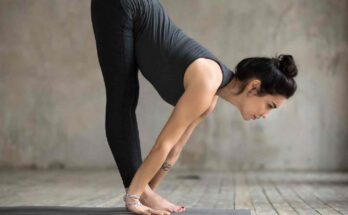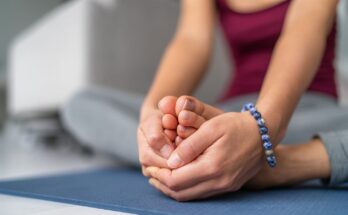The discomfort of knocked knees can grow with changing season, especially with the onset of winter. Knock knees is a condition where the knees angle in and touch when straightened. It can be both perplexing and painful. It gets worse as temperatures drop because it makes muscles feel more tensed and tight. If you are looking how to fix knock knees without surgery, try yoga. Performing yoga poses can not only ease the discomfort but also help treat knocked knees. Check out which yoga poses for knock knees you can perform.
What causes knock knees?
While a knock knee usually affects both legs, in some cases, it may affect one leg as well. It is caused by an underlying congenital or developmental disease. Common causes of knock knees include:
- Arthritis
- Vitamin D deficiency or rickets (a bone disease caused by lack of vitamin D)
- Osteomyelitis (A bone infection)
- An injury to the knees
- Obesity
- Metabolic disease
- Renal (kidney) failure
7 yoga poses for knock knees
These yoga poses can strengthen the muscles around your knee and reduce pain and discomfort. Health Shots spoke to yoga and spiritual leader Himalayan Siddhaa Akshar to find the best yoga poses to treat knock knees.
1. Mountain pose (Tadasana)
This pose enhances overall leg strength by engaging thigh muscles and promoting proper weight distribution, fostering stability in the knees. Here’s how to perform this pose:
- Stand with your feet hip-width apart.
- Engage your thigh muscles and lift your kneecaps.
- Ensure your weight is evenly distributed on both feet.

2. Triangle pose (Trikonasana)
With a focus on a wide stance and soft knees, Trikonasana stretches and strengthens leg muscles, offering a gentle yet effective approach to alleviating knee strain. Here’s how to perform this pose:
- Start with a wide stance.
- Turn one foot out and reach toward the toes of that foot.
- Keep the knees soft, not locked, to avoid strain.

3. Warrior II (Virabhadrasana II)
By balancing weight between legs and extending arms parallel to the floor, Warrior II not only builds stamina but also targets the muscles around the knee, promoting the right alignment. Here’s how to perform this pose:
- Step one foot back and turn it slightly in.
- Bend the front knee while keeping the back leg straight.
- Extend your arms parallel to the floor.

4. Tree pose (Vrikshasana)
This pose improves balance and strengthens the legs, which is crucial for those with knocked knees. The concentration required for balance further engages the muscles around the knee joint. Here’s how to perform this pose:
- Shift your weight to one leg and place the sole of the other foot on the inner thigh or calf.
- Focus on a point to help with balance.

5. Bridge pose (Setu Bandhasana)
A potent pose for engaging the thighs and buttocks, the bridge pose helps reinforce the muscles supporting the knee, fostering stability and reducing discomfort. This is also a great yoga pose for weight loss. Here’s how to perform this pose:
- Lie on your back with your knees bent and your feet hip-width apart.
- Lift your hips toward the ceiling, engaging the thighs and buttocks.

6. Child’s pose (Balasana)
While promoting relaxation, the child’s pose gently stretches and eases tension in the knee area, offering a soothing respite for those experiencing knock knee-related discomfort. Here’s how to perform this pose:
- Kneel on the mat and sit back on your heels.
- Extend your arms forward and lower your chest toward the ground.

7. Chair pose (Utkatasana)
Utkatasana not only strengthens the quadriceps but also encourages proper knee alignment by mimicking the act of sitting, providing a controlled exercise to fortify the knee muscles. Here’s how to perform this pose:
- Stand with your feet together, bend your knees, and lower your hips as if sitting in an imaginary chair.
- Keep the knees aligned over the ankles.

The benefits of these yoga poses extend beyond mere stretches; they actively contribute to strengthening the muscles surrounding the knee, providing relief from the persistent pain and discomfort associated with knock knees. So, perform them regularly to see results!
Source link




